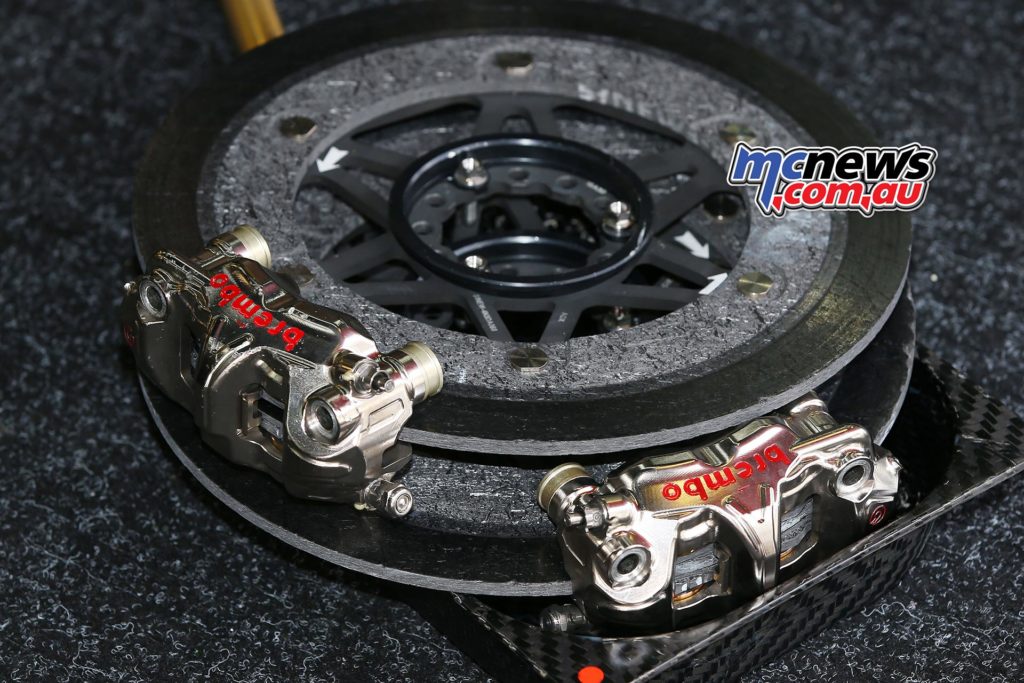Talking tyres (Michelin) and brakes (Brembo) ahead of Brno MotoGP
Following last weekend’s event at the new venue in Spielberg in Austria, the MotoGP field now returns to a more familiar circuit and one which has a history of producing close and exciting racing. The Brno track features long straights, fast and slow corners, big elevation changes and downhill braking sectors, all added to a medium level abrasive surface which gives a complete test to riders, machines and tyres.
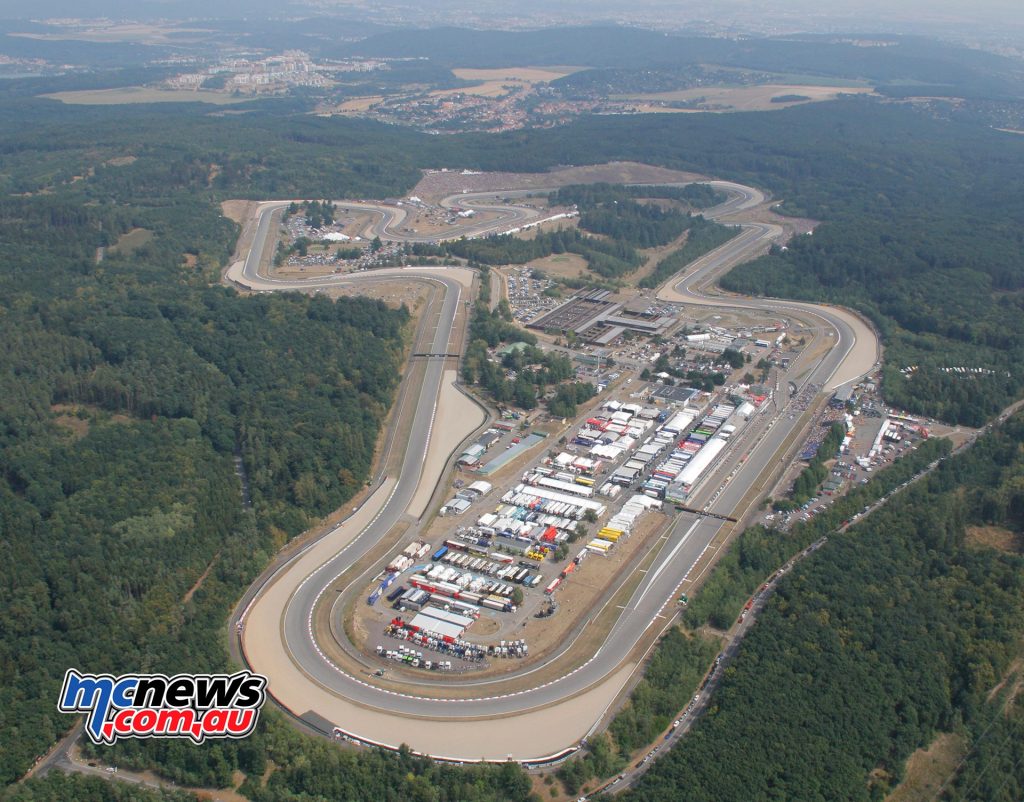
With such a complex number of factors, Michelin will supply tyres to cope with the stresses that will be placed upon the rubber, both from the stability needed for good braking and the grip required to power the bikes out of the corners. With six left turns and eight right-handers, the layout has a more symmetrical appearance than some of the recent tracks MotoGP has visited, but the extra rights and the speed of these turns means Michelin will supply asymmetric rears, both of which will have a harder right shoulder to combat the extra demands that will be generated around the circuit.
With the technical demands that will be faced, Michelin has a range of tyres designed to perform in all conditions and for all riders and machines. A selection of three front tyres in soft (identified by a white band), medium (no band) and hard (yellow band) will be available. These will be matched with two brand-new rear tyres that were first used at the Barcelona test and are aimed at providing the riders with increased traction. Available in soft (white band) and medium (no band), these rear Michelin Power Slicks will make their racing debut at Brno. The full range of Michelin Power Rain and Power Inter tyres will also be available to provide the best options for changeable or inclement weather.
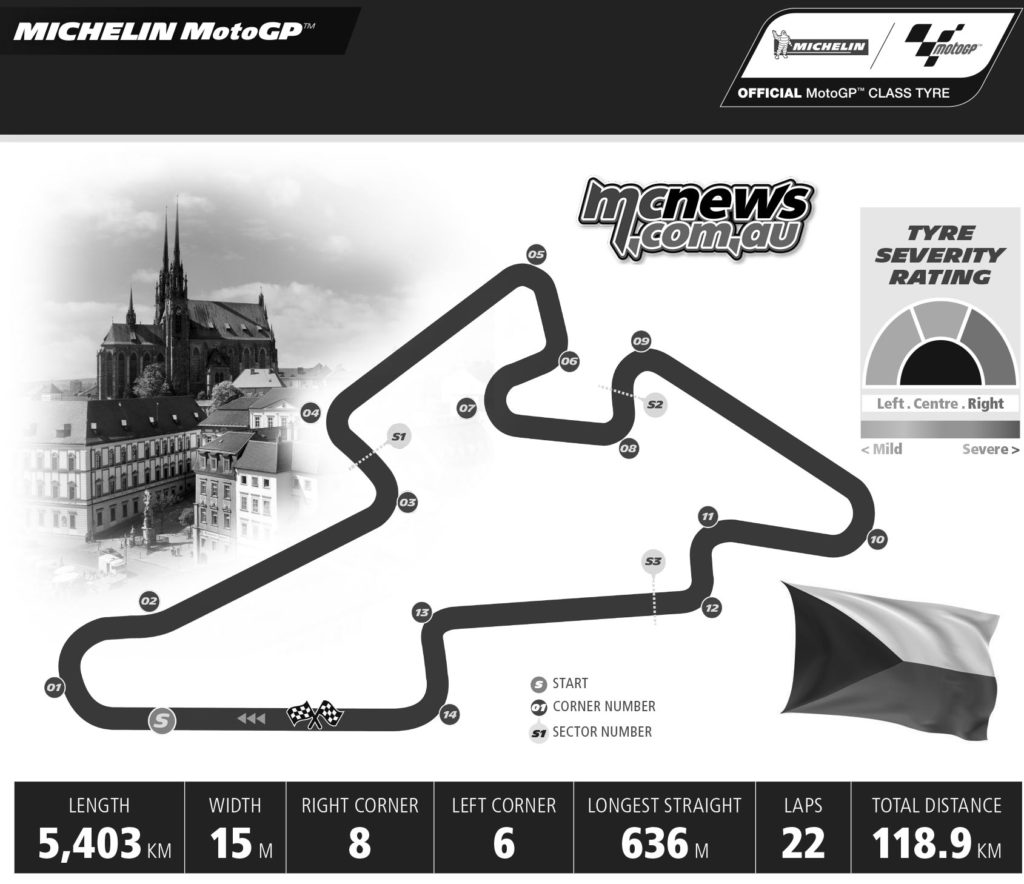
Piero Taramasso – Manager Michelin Two-Wheel Motorsport Group
“The Brno circuit is certainly a big test for tyres, as it features just about every type of corner, a medium abrasiveness and lots of changes in elevations, with over 70 metres of difference from the lowest to the highest points on the track, so we need to have tyres that can cope with the stresses that are placed upon them. The front tyre needs to be very stable under braking and the rear has to have a high level of grip to give the best drive out of the corners. We did test at the circuit last year, but it rained so we don’t really have any valuable data – unless it’s wet! We have already come a long way this season with the development of our tyres so we think that with the information we have gained over the first 10 races of the season we are in a good position to supply the correct tyres for the circuit, despite the lack of dry testing that we had when we came here. The Brno event is always a special one on the calendar and attracts a huge crowd, but sometimes the weather can be very unpredictable, we just hope that this weekend stays dry and warm, unlike some of the recent races we’ve had.”
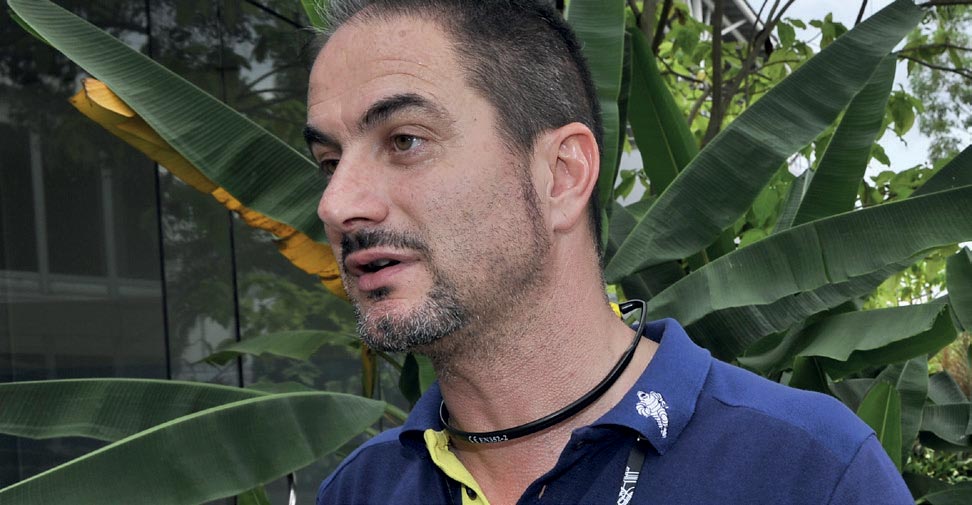
The Czech Republic’s MotoGP according to Brembo
Even though it’s a 5.4 km circuit, it features several major curves and few straight segments: the longest being only 636 metres. To increase the technical difficulties, the slope of the Brno race track changes often, the steepest upward slope reaching 7.52 degrees and steepest downward slope 5 degrees.
According to Brembo technicians, who deal with all the MotoGP riders (Brembo supplies 100% of the riders in the premium class), the Automotodrom Brno is among the circuits considered demanding for the brakes. On a scale of 1 to 5, the difficulty index was ranked as a 4 – the same ranking as the Spielberg track and the Spanish circuits: Jerez and Aragon.
Brake use during the GP
Nearly all 14 curves require braking, which is why riders use their brakes for over 13 minutes from start to finish.
On the other hand, the fact that only one braking section must be faced at more than 300 km/h means that average deceleration is fairly limited: 1.17 g.
The total of all the forces exerted by the rider on the brake lever throughout the whole GP comes out to about 1,200 kg, which is equivalent to 130 16-inch tires per vehicle.
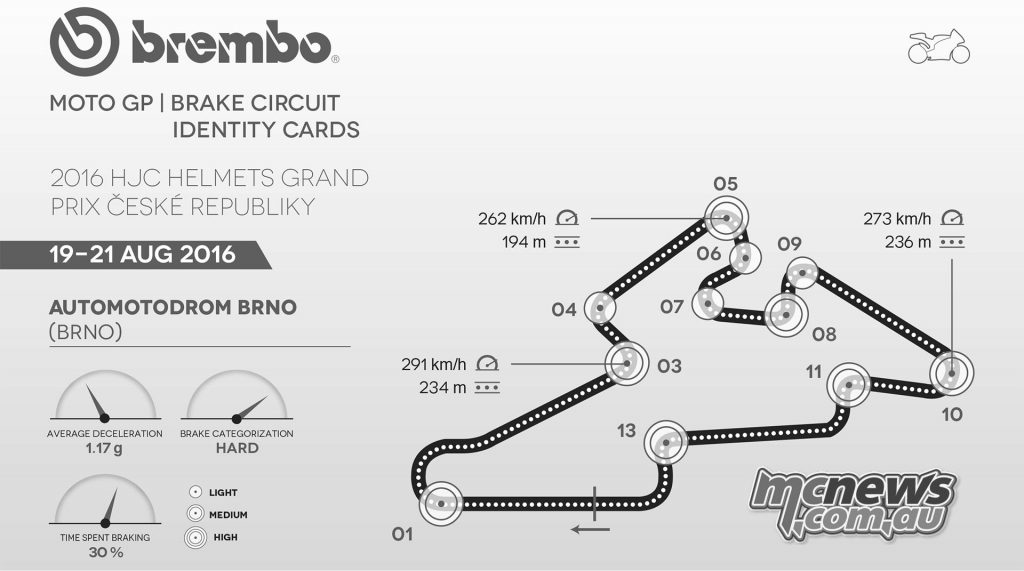
The most challenging stops
Of the 11 braking sections on the Brno circuit, none are considered particularly demanding on the brakes. However, 7 are medium and 4 are light.
The first curve (Frantisek Stansty), is slightly downhill, and is the longest: 260 metres, equivalent to 11 tennis courts, requiring you to go from 310 km/h to 126 km/h in only 4.6 seconds.
The most demanding for the braking system is the 3rd curve: the rider exerts a pressure of 6.1 kg on the brake lever resulting in a deceleration of 1.5 g as he goes from 291 to 109 km/h in 234 metres.
The longest curve, in terms of brake use, is the one named after Kevin Schwantz (curve 10): riders need 236 metres to take the curve at 103km/h after having reached 273 km/h.
The easiest braking session is curve 9; bikes must slow down by little more than 20 km/h before reaching the straight segment before the curve.
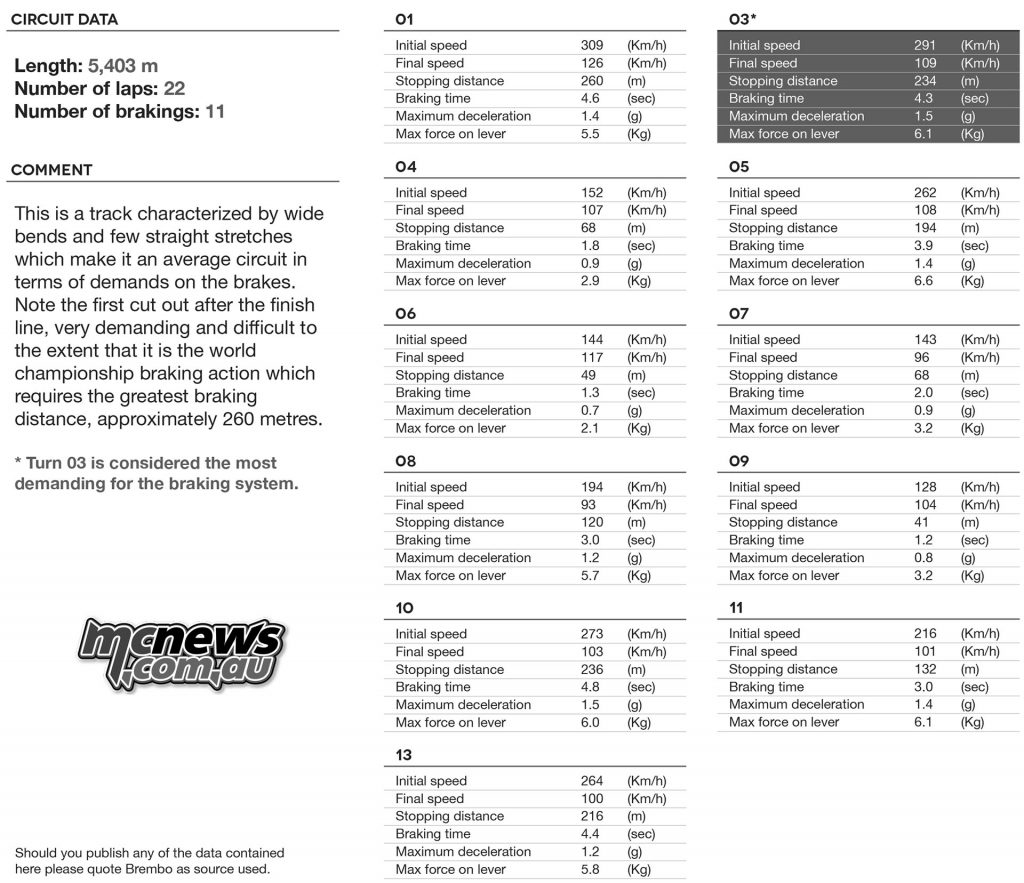
Brembo Victories
Bikes with Brembo brakes have won all 23 editions of the 500-MotoGP since 1993, the year that the competition was named the Czech Republic GP. Valentino Rossi won five of these, including his first World Championship victory 20 years ago, which he earned with an Aprilia 125 right here in Brno.
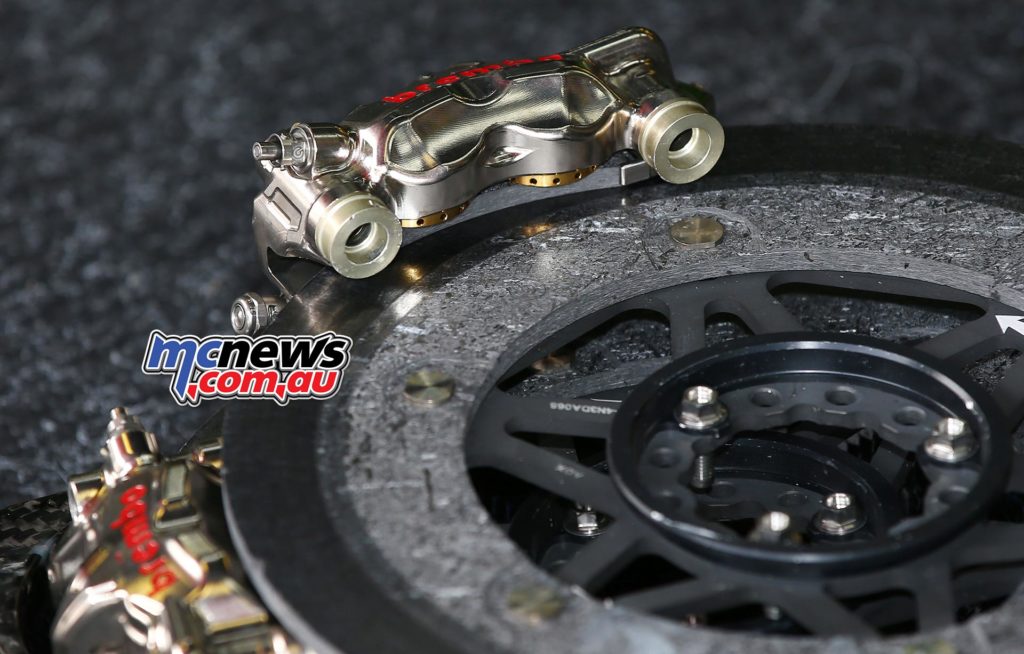
The Venue
The Automotodrom Brno, also known as the Masaryk Circuit, is situated in the south-east of the Czech Republic in the area of Kyvalka, about 20km from Brno city centre and 200km from the country’s capital Prague. Its position is in close proximity to many neighbouring countries such as Hungary, Slovakia and Poland, making Brno one of the best attended races of the season and a huge crowd is expected to gather around the hillsides of the natural amphitheatre that forms the setting for this beautiful circuit. The present 5,403m Brno Grand Prix circuit was built in 1987 and is located in woodland near to the old street circuit which originally staged road-racing events from its inception on the 1930’s right up until the end of 1986.
Michelin and the riders will take to the track on Friday 19th August for the first two free practice sessions, with another free practice the following morning. Saturday afternoon will see the all-important qualifying sessions where grid places will be decided for Sunday’s 22-lap race.
